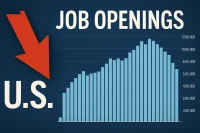As we approach 2025, HR technology tools promise to enhance everything from hiring to team loyalty. However, overloading processes with too many tools can create more chaos than efficiency.
Top HR pros have their favorite among the best AI recruiting tools — but how do they pick the right ones? Let’s explore how HR teams classify and select tools to bring their recruitment strategies to life.
Types of HR Tech Software by Purposes
Most HR software applications include AI, but it’s better to focus on your needs and the extent to which the tool helps, not on the AI label.
Applicant Tracking Systems (ATS)
Purpose: Managing and streamlining the hiring pipeline.
Examples: Workable, Greenhouse
Pluses:
- AI-driven ATS solutions speed hiring by automatically screening resumes, ranking candidates, and providing accurate recommendations.
- Many ATS platforms integrate with other HR tools, ensuring a seamless recruitment workflow.
Cons:
- When relying solely on AI screening, you can overlook strong candidates who don’t align exactly with the set filters;
- If not designed carefully, AI algorithms can introduce bias rather than eliminate it.

Candidate Sourcing Platforms
Purpose: Analyzing vast talent pools, parsing resumes, identifying ideal candidates, and automating outreach.
Examples: SeekOut, HireEZ, Entelo
Pluses:
- AI-driven sourcing tools help recruiters discover passive candidates who might not be actively applying but are a great fit.
- Advanced analytics ensure companies reach diverse talent and make data-driven hiring decisions before competitors do.
Cons:
- AI algorithms may favor certain candidate profiles, leading to unintentional bias.
- Without human oversight, automation in sourcing can result in impersonal candidate experiences.
Onboarding Platforms
Purpose: Smooth onboarding and boost retention.
Examples: BambooHR, WorkBright
Pluses:
- These HR software applications use AI to tailor the experience to each new hire’s specific needs;
- These tools automate document management, task assignments, and even e-signatures, making the onboarding process consistent.
Cons:
- Without proper personalization, automated onboarding can feel impersonal to new hires.
- Some platforms may lack the necessary flexibility for unique onboarding requirements.
Performance Management Systems (PMS)
Purpose: Tracking key performance indicators (KPIs) and ensuring that employees are aligned with company goals.
Examples: 15Five, Lattice
Pluses:
- AI-powered features of this HR tech software provide insights into performance trends and suggest actionable improvements.
Cons:
- Performance management tools can become too focused on metrics, neglecting the more subjective, human elements of performance.
- Over-reliance on data-driven feedback can lead to disengagement if not handled properly.
Employee Engagement and Well-being Platforms
Purpose: Improving employee satisfaction and overall workplace well-being.
Examples: TINYpulse, Officevibe
Pluses:
- AI algorithms identify potential issues early and help HR teams intervene before problems arise.
- Engagement tools provide ongoing feedback, promoting a culture of transparency and open communication.
- As a result, you can cut turnover rates.
Cons:
- These tools rely heavily on employee self-reports, which can be inaccurate or influenced by short-term factors.
- There’s a risk of privacy concerns, as AI may track employee moods and interactions in ways that could feel invasive.
Learning and Development Tools
Purpose: Enhancing employee skills and encourage continuous learning.
Examples: LinkedIn Learning, EdCast
Pluses:
- AI platforms personalize learning by adapting to each employee’s style and progress.
- These tools enable employees to access training materials on-demand.
Cons:
- If AI recommendations are not tuned to the specific needs of employees, they might miss the mark, leading to disengagement.
- These tools are only as effective as their content quality.
HR Analytics Tools
Purpose: To analyze and interpret data related to workforce trends, retention, and overall HR metrics.
Examples: Visier, ADP DataCloud
Pluses:.
- AI capabilities of this HR tech software can uncover hidden patterns in employee data, making it easier to predict future trends and behaviors.
Cons:
- Data privacy is a major concern, as these tools often require access to sensitive employee data.
- The insights generated by these tools are only as good as the data provided, and incomplete or biased data can lead to misleading conclusions.
How to Combine HR Tools Effectively
The answers may differ depending on your team and HR processes you’d like to level up, yet we can list the most proven use cases.
AI-Driven Candidate Sourcing + Applicant Tracking Systems (ATS)
Use Case: Enhancing talent acquisition efficiency
How It Works: AI-powered candidate sourcing platforms identify top candidates across various job boards, professional networks, and passive talent pools. These candidates are then fed directly into an ATS for structured tracking and evaluation.
Benefits:
- Automates sourcing and shortlisting, reducing recruiter workload
- Ensures smooth candidate data transfer between sourcing and hiring systems
- Helps recruiters quickly identify high-potential applicants
ATS + Onboarding Platforms
Use Case: Creating a seamless transition from hiring to onboarding
How It Works: Once a candidate is hired through an ATS, their information is automatically transferred to an onboarding platform. This allows for smooth document processing, task assignments, and personalized onboarding experiences.
Benefits:
- Eliminates redundant data entry and manual paperwork\
- Ensures a structured, engaging onboarding experience for new hires
- Reduces time-to-productivity for new employees
Onboarding Platforms + Performance Management Systems (PMS)
Use Case: Aligning new hires with company goals from day one
How It Works: Once a new hire completes onboarding, their progress can be tracked within a performance management system. This enables HR teams to monitor their early contributions and ensure alignment with company objectives.
Benefits:
- Encourages early engagement and goal-setting
- Helps managers identify high-potential employees faster
- Provides insights into onboarding effectiveness and employee satisfaction
Performance Management Systems + Employee Engagement Platforms
Use Case: Improving retention and workplace satisfaction
How It Works: Performance tracking tools generate insights into the team’s achievements and areas for improvement. These insights integrate with engagement platforms to assess overall workplace satisfaction and potential burnout risks.
Benefits:
- Enables proactive HR interventions before engagement drops
- Encourages a culture of continuous feedback and recognition
- Supports employee well-being and reduces turnover rates
Learning & Development + Performance Management Systems
Use Case: Enhancing employee growth and career progression
How It Works: PMS platforms track employee strengths and weaknesses, using AI-driven insights to recommend personalized learning programs from platforms like LinkedIn Learning or EdCast.
Benefits:
- Creates tailored development plans for employees
- Helps HR teams identify skill gaps and upskilling opportunities
- Increases long-term retention by investing in employee growth
HR Analytics Tools + Every HR System
Use Case: Data-driven decision-making across all HR functions
How It Works: HR analytics platforms integrate with ATS, performance management, and engagement tools to provide actionable insights on hiring trends, employee retention, and workplace satisfaction.
Benefits:
- Helps HR teams optimize recruitment strategies based on real data
- Predicts turnover risks and engagement trends before they impact business performance
- Ensures continuous improvement across all HR functions
And the most common point, no matter how many HR technology tools you use, HR professionals are still needed to properly orchestrate and interpret the results.




